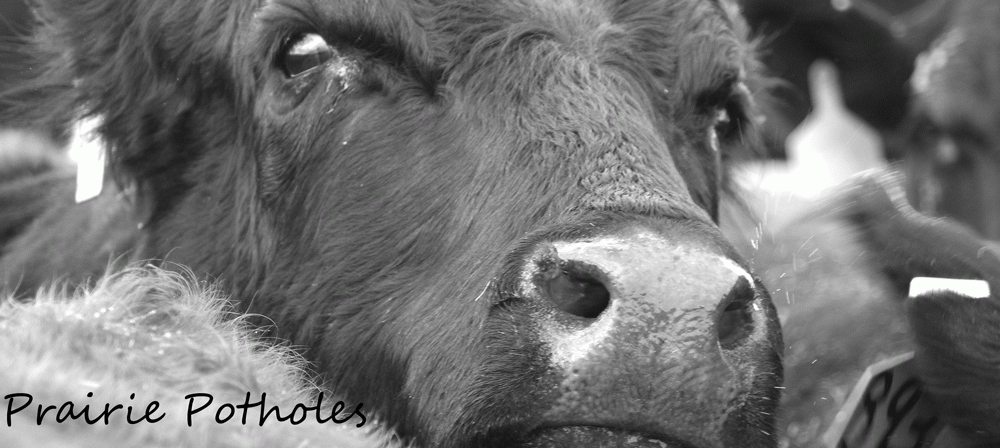
Beware, patrons of Prairie Potholes: this post contains bad science and pictures of a cow's (actually two cows) nether regions. Please stop reading if reality frightens you.
 Danish Cowboy assured me that by March 13th there would be baby calves everywhere, or at least they would be starting to arrive on a regular basis. Well, they aren't. We have three. So this weekend, when I was able to go on the morning feeding rounds, I studied the cows intently. I've been taught the signs of an impending birth though I'm starting to doubt their accuracy.
Danish Cowboy assured me that by March 13th there would be baby calves everywhere, or at least they would be starting to arrive on a regular basis. Well, they aren't. We have three. So this weekend, when I was able to go on the morning feeding rounds, I studied the cows intently. I've been taught the signs of an impending birth though I'm starting to doubt their accuracy. From a distance, the most obvious sign is the kinked tail and the aimless wandering of the fenceline looking for an escape to go calve in privacy. Of course, kinked tails might also mean that the animal just pooped. Or maybe they're just swatting their tails for fun. One never knows.
From a distance, the most obvious sign is the kinked tail and the aimless wandering of the fenceline looking for an escape to go calve in privacy. Of course, kinked tails might also mean that the animal just pooped. Or maybe they're just swatting their tails for fun. One never knows. The next sign that we look for is the "springing" of a cow's hind end. I refuse to go in to details here. It's too embarrassing. This cow is not springing.
The next sign that we look for is the "springing" of a cow's hind end. I refuse to go in to details here. It's too embarrassing. This cow is not springing.
This one might be. Or she might just be older and a little, shall we say, "looser." See? Bad science. False conclusions. Disappointment when calves don't appear.

The last sign we look for, other than calf hooves sticking out of a cow or a calf actually laying on the ground, is the condition of the udder. Many cows will "bag up" in the days to weeks preceding birth. "Floppy" udders mean birth is not likely any time soon.

Udders that are starting to fill with milk mean that a cow could go into labor soon, but it might also be a few days or weeks. And thus concludes today's cattle gynecological anatomy lesson.

No comments:
Post a Comment